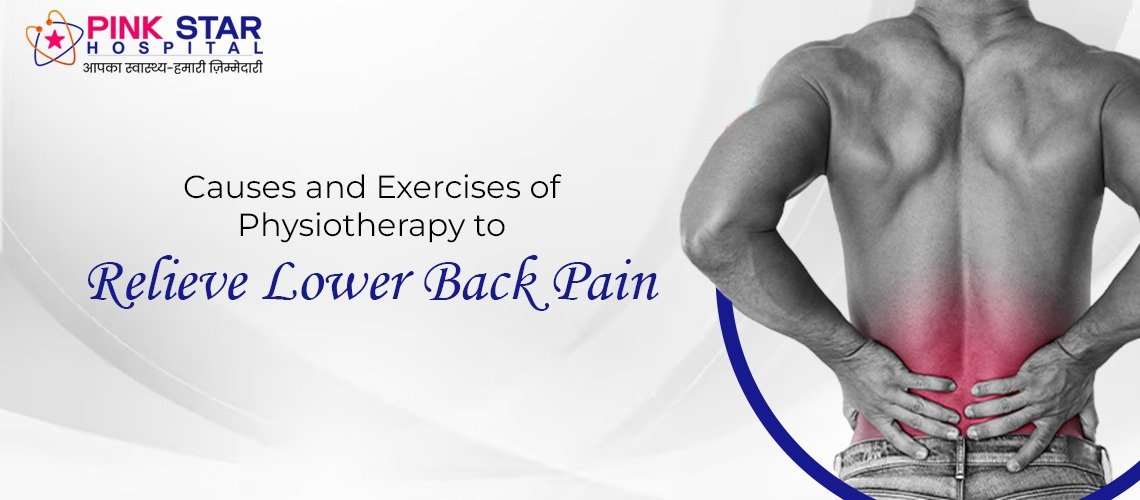Causes and Exercises of Physiotherapy to Relieve Lower Back Pain
Causes and Exercises of Physiotherapy to Relieve Lower Back Pain Lower back pain is a leading cause of disability worldwide, affecting millions and making daily activities challenging. However, with the right treatment and exercises, it is possible to manage and even overcome back pain, restoring mobility and returning to a normal life. In this blog, we will explore seven effective physiotherapy exercises for relieving lower back pain and discuss some common causes of this condition. What is Back Pain Physiotherapy? Physiotherapy, or physical therapy, involves specialized exercises and techniques to treat lower back pain. It includes the assessment, diagnosis, and treatment of back pain with the goal of reducing pain, improving mobility, and enhancing overall well-being. The Role of Physiotherapy in Back Pain Physiotherapy is essential in managing lower back pain by addressing its root causes and promoting recovery. Through targeted exercises, stretches, and manual techniques, physiotherapists help patients regain strength, flexibility, and function in the affected area. Consulting with a spine specialist or physiotherapist, such as those at ML Center, the top orthopedic hospital in Jaipur, can be crucial for effective treatment. Causes of Lower Back Pain Lower back pain can arise from various causes. Some common ones include: – Improper Lifting Techniques: Sudden movements or incorrect lifting can strain muscles and cause back pain. – Herniated Discs: Discs that protrude or rupture can compress nearby nerves, leading to pain. – Degenerative Disc Disease: Age-related degeneration of spinal discs can increase the risk of back pain. – Poor Posture: Sitting or standing incorrectly can contribute to back pain. – Osteoarthritis: This condition can lead to lower back pain. – Abnormal Spinal Curvature: Uneven stress due to abnormal curvature can cause pain and functional limitations. Top 7 Physiotherapy Exercises for Lower Back Pain Relief Incorporating specific exercises into your routine can offer effective relief from lower back pain and improve mobility. Here are seven physiotherapy exercises for back pain relief that can be performed at home or with a physiotherapist’s guidance: 1. Pelvic Tilt Exercise: – Lie on your back with your knees bent and feet flat on the floor. Tighten your abdominal muscles, flatten your lower back against the floor, hold for a few seconds, then release. 2. Bridge Exercise: – Lie on your back with your knees bent and feet flat. Lift your hips off the floor to form a straight line from your shoulders to your knees. Hold the position, then lower your hips back down. 3. Cat-Cow Stretch: – Start on your hands and knees. Arch your back upward (like a cat), then lower your belly toward the floor (like a cow). Repeat this motion to stretch and strengthen your back. 4. Child’s Pose: – Sit back on your heels with your knees apart. Reach your arms forward and lower your chest toward the floor, resting your forehead on the ground. 5. Seated Spinal Twist: – Sit upright with one leg extended and the other knee bent and crossed over the opposite leg. Twist your torso towards the bent knee to stretch and mobilize your spine. 6. Bird Dog Exercise: – Start on your hands and knees. Extend one arm forward and the opposite leg backward, keeping your back flat. Return to the starting position and switch sides. 7. Dead Bug Exercise: – Lie on your back with arms extended toward the ceiling and legs raised with knees bent. Slowly lower one arm and the opposite leg towards the floor, then return to the starting position and repeat on the other side. Conclusion Physiotherapy exercises are an effective way to manage and alleviate lower back pain. By incorporating these exercises into your routine, you can improve your mobility and overall quality of life. Understanding the potential causes of lower back pain and addressing them through physiotherapy can help you live a more active and pain-free life.

